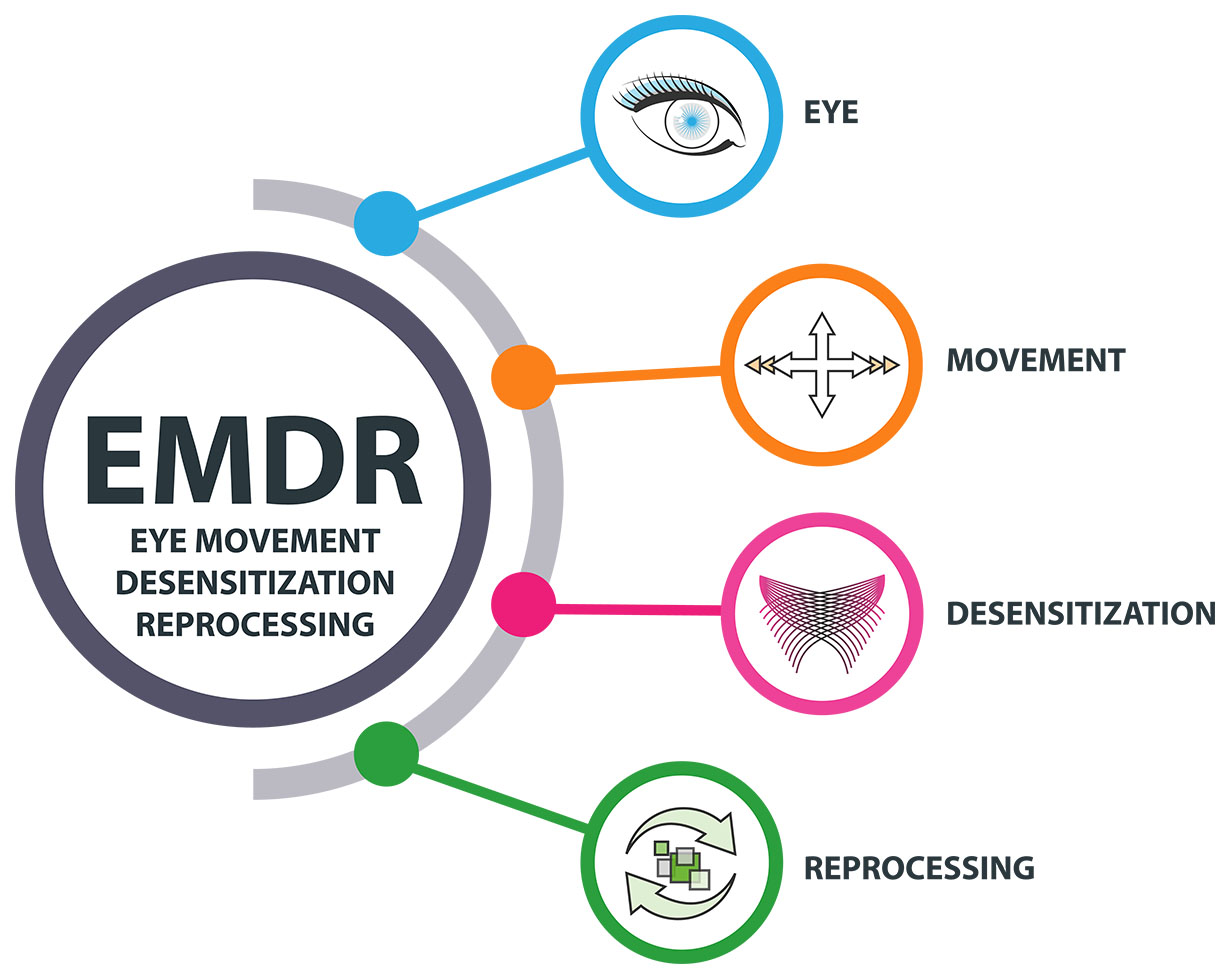 EMDR (Eye Movement Desensitization and Reprocessing) is a therapeutic approach that has been found to be effective in treating a range of psychological issues, including anxiety and depression. The exact mechanism through which EMDR works is not entirely clear, but there are several theories that may explain its effectiveness.
EMDR (Eye Movement Desensitization and Reprocessing) is a therapeutic approach that has been found to be effective in treating a range of psychological issues, including anxiety and depression. The exact mechanism through which EMDR works is not entirely clear, but there are several theories that may explain its effectiveness.
One theory is that EMDR works by facilitating the processing of traumatic memories. Traumatic experiences can become “stuck” in the brain and cause ongoing symptoms of anxiety and depression. EMDR involves a process of recalling the traumatic memory while simultaneously engaging in some form of bilateral stimulation, such as eye movements or tapping. This bilateral stimulation is thought to help the brain reprocess the traumatic memory and integrate it in a more adaptive way, which can reduce the associated symptoms of anxiety and depression.
Another theory is that EMDR may work by reducing the intensity of negative emotions associated with traumatic memories. During an EMDR session, a person may be asked to rate the level of distress associated with a particular memory, and then engage in bilateral stimulation while focusing on that memory. Over time, the distress associated with the memory may decrease, which can lead to a reduction in symptoms of anxiety and depression.
Finally, some researchers have suggested that EMDR may work by activating the brain’s natural healing processes. The bilateral stimulation used in EMDR has been shown to stimulate the brain’s alpha and theta waves, which are associated with relaxation and creativity. This may help to reduce overall levels of stress and promote a sense of well-being.
Overall, the exact mechanism through which EMDR works is still being studied, but it is believed to be effective for anxiety and depression because it can help to reprocess traumatic memories, reduce the intensity of negative emotions, and activate the brain’s natural healing processes.
This book, written by the founder of EMDR, provides a comprehensive overview of the theoretical underpinnings of EMDR and the research supporting its effectiveness. Chapter 4 focuses specifically on the neurobiological mechanisms of EMDR.
This meta-analysis reviewed 26 studies that investigated the effects of eye movements on the processing of emotional memories. The authors found that eye movements were associated with a significant reduction in the intensity of negative emotions associated with traumatic memories.
This study used fMRI to investigate the neural mechanisms underlying the effects of EMDR on post-traumatic stress disorder (PTSD). The authors found that EMDR was associated with increased activity in brain regions involved in emotional processing and decreased activity in brain regions involved in defensive responding.

Diana Smith, PhD, LPC-MH owns and operates Serenity Mental Health Services and is licensed by the National Board of Certified Counselors. License number is LPC-MH2025 and she follows the ethical guidelines described by the NBCC found at their web site www.nbcc.org/webethics2. Diana is a member of the National Board for Certified Counselors, Certification Number 43911. In addition, she is also a member of the American Counseling Association, Member ID# 5140627. Online counseling can help you right now. Research has made it clear that this manner of offering therapy is effective and those who’ve experienced it have said they would seek it out again.
Dr. Diana is an APA (American Psychological Association) EMDR (Eye Movement Desensitization and Reprocessing) approved Therapist in Training.